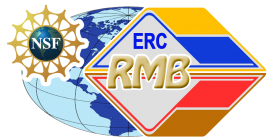New Paths to Commercializing Biomedical Devices Evolve from Licensing Agreement
Lessons learned from an option-to-license agreement have paved the way for new collaborations that are moving proprietary technology for regeneration of the Anterior Cruciate Ligament (ACL) closer to commercialization. The original agreement between the (NSF)-funded Engineering Research Center (ERC) for Revolutionizing Metallic Biomaterials (RMB), headquartered at North Carolina A&T University (NCAT), and inCube Labs was for multiple advances and served as an important first step and learning opportunity for the ERC-RMB in the complex and difficult process of translating medical devices from the research lab to the marketplace.
The partnership between ERC-RMB and inCube was a landmark event for the ERC, as it was the first tangible recognition of the commercial potential for ERC technologies. It also helped pave the way for engagement by the Coulter Translational Partnership Program at the University of Pittsburgh (Pitt, an RMB partner), which committed supplemental funding to support studies needed to provide data required to move toward exercise of the option to license.
When continuation of the agreement with inCube was considered, it was clear that the ACL technology piece would benefit from expanding opportunities for additional industry engagement. Subsequently, the Naton Institute of Medical Technology (NMTI) signed a collaborative agreement with ERC-RMB for joint development of ACL ring technologies, including a provision for Naton to send a surgeon and engineers to work on product development at Pitt. With Naton’s support, ERC-RMB filed a Patent Cooperation Treaty (PCT) application, and “nationalized” it in the US, China, and EU. Subsequently, Dr. Katie Farraro (an ERC-RMB graduate) traveled to Beijing to spend 2 ½ months working with a team of engineers at NMTI on research toward commercial translation. Interface work with Naton is ongoing, as further development is required before commercialization can initiate.
ERC-RMB’s research focuses on developing biodegradable metallic biomaterials and smart coatings with built-in capabilities to adapt to biological changes. Using these materials in engineered systems that interface with the human body holds great promise for transformational orthopedic, cardiovascular, and other specialized therapies that prolong and improve the quality of life.
Emerging from the ACL licensing experience, ERC-RMB refocused clinician efforts at the project level to help principal investigators (PIs) identify subject matter experts in device technologies specific to their project interests. As such, each device team was encouraged to seek clinician input from recognized experts outside of the current ERC-RMB institutional framework, while maintaining a core group of clinical science advisors involved more broadly across ERC-RMB activities.


